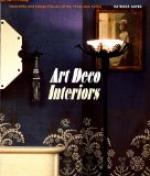During RENAISSANCE OR ELIZABETHAN {
PERIOD (16th Century) {Table chests, presses, chairs,
types begin to establish { benches, settles, and small
and repeat themselves. { chests of drawers.
{Inlaying
in ebony, ivory,
{ mother-of-pearl,
and ebonised
{ oblong bosses
of the jewel type
{ (last half
of 17th Century).
In the JACOBEAN (17th Century) { The tulip
design introduced there was already a set type,
{ from Holland as decoration. pieces made all
alike, turned {Turned and carved frames and
out by the hundreds. { stretchers;
caned seats and
{ backs to chairs,
velvet cushions,
{ velvet satin
damask and
{ needlework
upholstery, the
{ seats stuffed.
Henry VIII made England Protestant, it having been Roman Catholic for several hundred years before the coming of the Anglo-Saxons and for a thousand years after.
{QUEEN ELIZABETH.
PROTESTANT. {
{"The Elizabethan Period.”
STUART. {JAMES I. 1603.
ROMAN CATHOLIC. {
“JACOBEAN.” {CHARLES I. (Puritan Revolution),
1628.
{Oliver
Cromwell. 1649.
PURITAN. {
{Commonwealth.
STUART. {Charles II. (1660), Restoration.
ROMAN CATHOLIC. {
“JACOBEAN.” {James II. (1686), Deposition
and Flight.
{William—Prince
of Orange (Holland), 1688.
PROTESTANT. { Who had married the English Princess
{
Mary and was the only available Protestant
{
(1688).
PROTESTANT. —Queen Anne (1702-1714).
CHAPTER XXI
THE MAHOGANY PERIOD
It is interesting to note that the Great Fire of London started the importation of foreign woods from across the Baltic, as great quantities were needed at once for the purpose of rebuilding. These soft woods aroused the invention of the cabinet-makers, and were especially useful for inlaying; so we find in addition to oak, that mahogany, pear and lime woods were used in fine furniture, it being lime-wood that Grinling Gibbons carved when working with Sir Christopher Wren, the famous architect (seventeenth century).
During the early Georgian period the oak carvings were merely poor imitations of Elizabethan and Stuart designs. There seemed to have been no artist wood-carvers with originality, which may have been partly due to a lack of stimulus, as the fashion in the decoration of furniture turned toward inlaying.
THE PERIOD OF WILLIAM III AND QUEEN MARY AND EARLY GEORGIAN
are characterised by turned work, giving way to flattened forms, and the disappearance of the elaborate front stretcher on Charles II chairs.
The coming of mahogany into England and its great popularity there gives its name to that period when Chippendale, Heppelwhite, Sheraton and the Adam Brothers were the great creative cabinet-makers. The entire period is often called CHIPPENDALE, because Chippendale’s books on furniture, written to stimulate trade by arousing good taste and educating his public, are considered the best of that time. There were three editions: 1754, 1759, and 1762.




